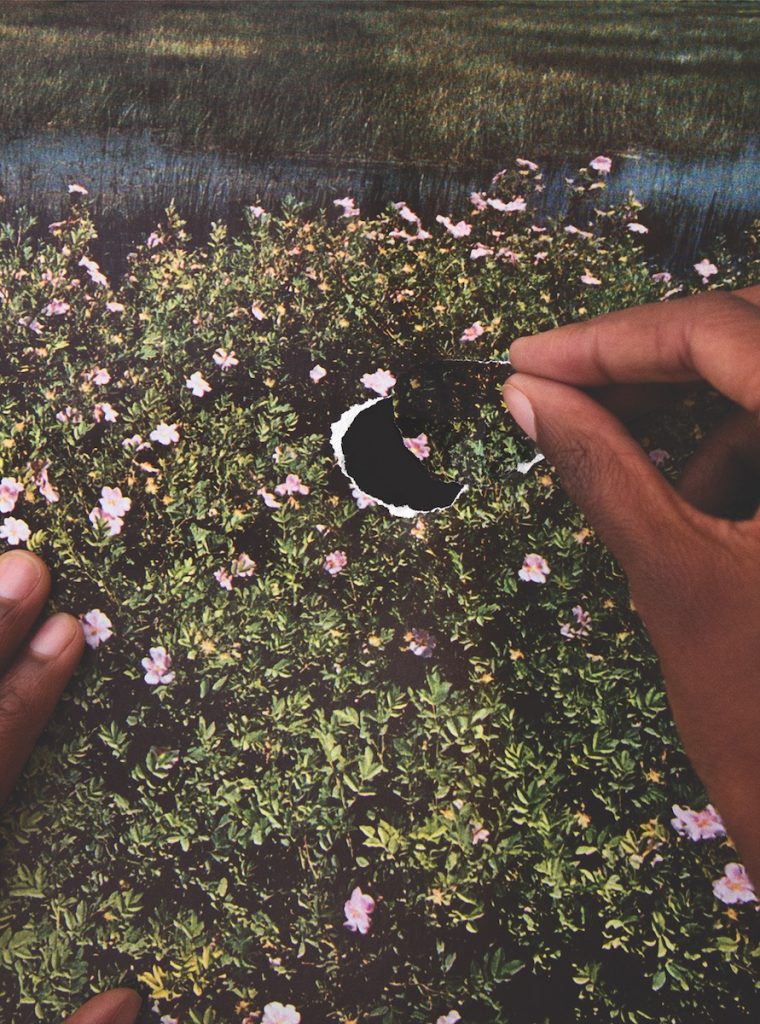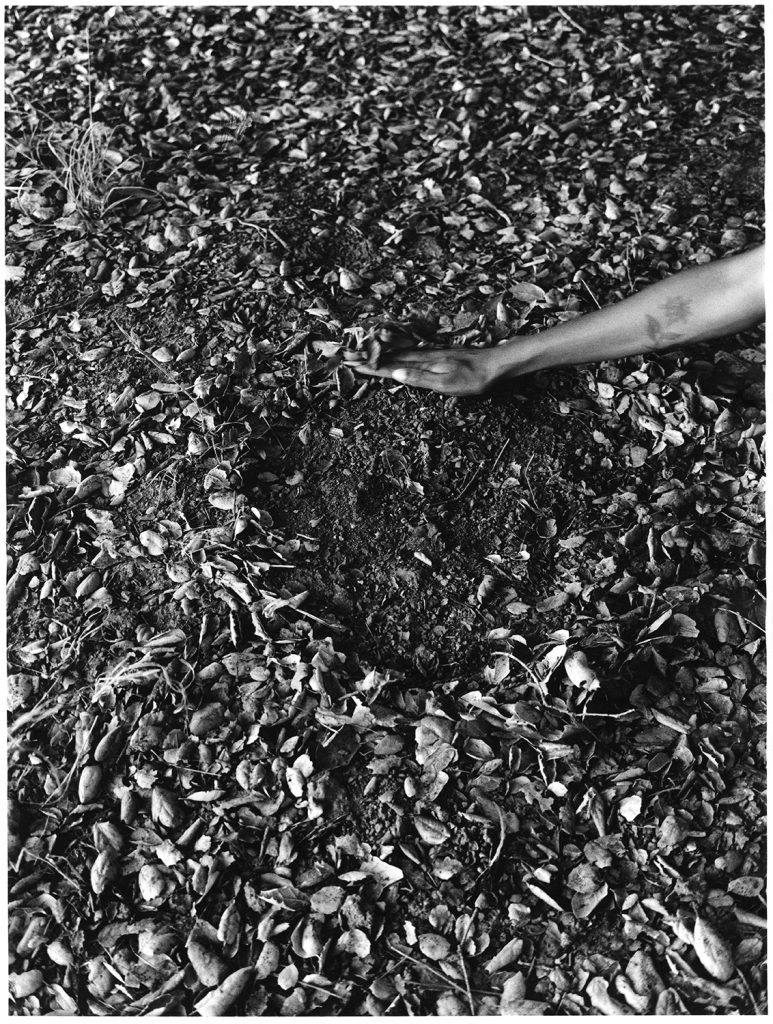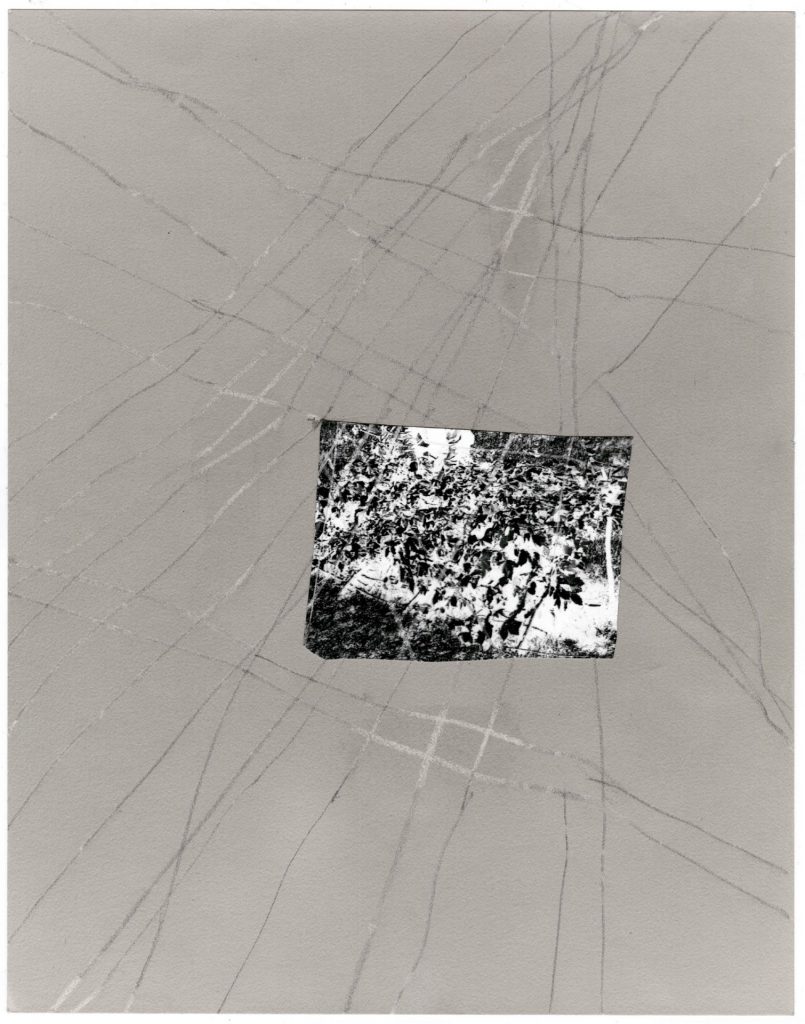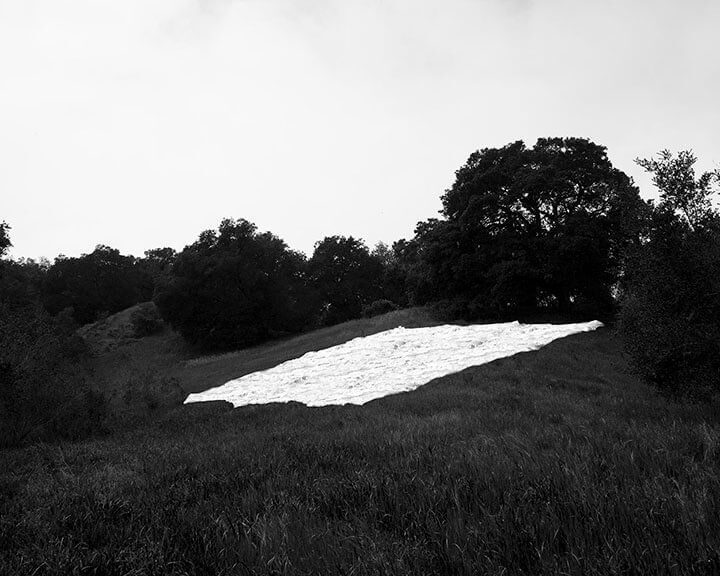As spring blooms in New Orleans, our attention turns towards the environment, sustainability, and climate change. Photographer Dionne Lee (American, b. 1988) considers these themes through lenses of representation, power, and personal history in the context of the American landscape.
Much of Lee’s art centers around wilderness survival and ways to live in concert with the Earth. Building outdoor skills are part of Lee’s artistic practice and she made the photograph Fire Bed after a class on making fire from scratch.
Lee’s interest in survival skills emerged as a reaction to climate change and global chaos. Her curiosity led her to reflect on how some Black Americans, whose ancestors labored and lived closely on the land for centuries, have been cut off from that knowledge over time due to things like migration, violence, and lack of access. Lee inserts herself into the field of her photographs as a reference to those histories and her own embodied experience.
Lee also employs elements of collage and other media in her photographic practice. Netting (2019) features an inverted image of a lean-to shelter at its center.
Taking the climate crisis as a given, Lee confronts questions of exactly who has access to the necessary resources for survival. Here, her frenetic mark-making lend a sense of anxiety and urgency, while stretching the pattern of sticks laid for shelter or rope woven into a net beyond the frame of the photograph and onto its support.
In works like A plot that also grounds, Lee uses found photos of the landscape as source material. By manipulating the image and re-photographing it, Lee intervenes in how the idealized photograph represented the environment, encouraging us to think about how photographs are used to dictate ideas about who has the right to control the natural world and how it should be used.

Dionne Lee (American, b. 1988), A plot that also grounds, 2018, Archival inkjet print , 9 x 13 in., Courtesy of the artist
This photo contains an intriguing ambiguity – Is the circle of green being removed, or returned? – that can serve as a metaphor for so many other questions. Historically, what did either the possession of land, or lack of a “plot” mean for people? Today, are we taking steps towards repair and sustainability, or continuing to create absence in our environment?
The title A test for 40 acres is a reference to the American government’s pledge to provide land to formerly enslaved people at the end of the Civil War. To prepare for this photo, Lee stitched together mylar survival blankets into a huge square and spread it on the hillside.
Lee’s photograph points to that unfulfilled promise, a reminder that Black Americans were largely denied ownership of the land that they worked over more than four centuries of enslavement. Before that, the same land was occupied by Indigenous people, who remain largely displaced.
This photograph presents more metaphorical questions, as well as a call to clarity and action. Are we looking at a distress signal aimed skyward or a bandage on a planet in crisis? How have actions throughout American history brought us to this point, and what are we prepared to do to protect our environment and each other?
These photographs and others by Dionne Lee are currently on view in New Photography: Create Collect Compile, recently extended at NOMA until June 6, 2021. Visit this spring to see these and other inspiring work by Elliott Jerome Brown Jr., Esther Hovers, and Guanyu Xu.
—Brian Piper, Mellon Foundation Assistant Curator for Photography
NOMA is committed to uniting, inspiring, and engaging diverse communities and cultures through the arts — now more than ever. Your gift will make a direct and immediate impact as NOMA welcomes our community back to the museum and sculpture garden, plans new exhibitions, and develops virtual and at-home arts education resources for school partners.



